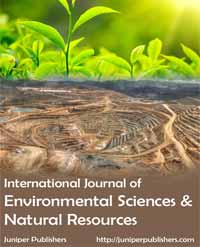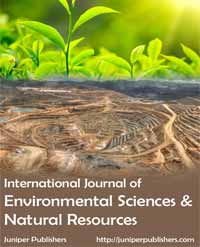Trophy Hunting Anxiety at Sengwa in Retrospect Now and the Future-Juniper Publishers
Juniper Publishers- Open Access Journal of Environmental Sciences & Natural Resources
Trophy Hunting Anxiety at Sengwa in Retrospect Now and the Future
Authored by Ngorima Patmore
Abstract
Over the years hunting at Sengwa has proved to be a worthwhile and fantastic venture. Hunting thrills both the new entry and hardened bush lovers. Hunting outcomes have provided the basis of bravely packaged future hunts. The uncertainties of getting desirable trophy quality make hunting unpredictable and always interesting. Despite constraints in ever tightening regulations hunting is still in its glory and it is a worldwide occupation. It is rewarding to fulfill one's ego in appropriately appointed safari hunts. At Sengwa Wildlife Research Area (SWRA) the challenge has always been the anxiety to fulfill one's hunting bag in the shortest but most exhilarating African hunt. A beautiful picture is then made of the hunting patterns at Sengwa in one of the last remaining out-backs of rugged and harsh terrains. Hunting is a knot of hunters' emotions, hope, worry and gratitude that delight in its existence. In this paper, the hunting paradox are investigated so that a template can remain for future management to secure hunting in SWRA and to improve biodiversity conservation.This paper represents a structured assessment on the impacts of hunting in SWRA and the potential that trophy hunting can provide to wildlife conservation for the present and future generation if effectively managed and monitored
Keywords: Trophy hunting; anxiety; Sengwa Wildlife Research Area
Introduction
Trophy hunting in Zimbabwe and elsewhere in the world today is witnessing raging debates on its relevance or irrelevance in all its forms of significance, acceptance and effectiveness as a conservation tool hence the hunting paradox [1] .Whereas hunting was considered the most logical thing to do for eons of years its continued practice is under severe threats [2] . Trophy hunting has become a controversial topic in the conservation community, some argues that it can subsidize for the safeguarding of wild animals and their habitats whilst others share the perception that trophy hunting exploits species, rural people and contributes little if anything to conservation of wild game animals [3]. Globally trophy hunting has been shown to be detrimental to several species including lions [4].
However, local communities in many parts of the world rely on hunting for a living, whilst in some countries hunting is a key economic mainstay [1]. In recent year's concern have been raised by the United State Department of Wildlife and Fish (USDWF) over the commercial trophy hunting of elephant and lion in Zimbabwe. This concern might be related to lack of proper information on trophy quality and hunting off-takes hence the anxiety for the future of trophy hunting. To anyone on a first visit the first time, the enchanted hunting hardened bushes of SWRA in the north-western Zimbabwe resemble an ideal destination. It bears a vast biodiversity of wild animals like a modular descent into the Garden of Eden.
The aroma wondering animals', bios and insects reminds the visitor of a natural ecosystem. It traps and allures the mind of one into the treasures of the wilderness with important wild game animals including buffalo, elephant, lion, leopard, impala, warthog, wildebeest, duiker, eland and giraffe. However, proper management is vital to ensure that SWRA remains a viable hunting destination In Sengwa Wildlife Research Area, hunting includes welcoming hunters to overwhelm their greatest expectations in return for fiscal strength.
However, not much is known concerning the future of trophy hunting yet this industry is a key economic mainstay that contributes substantial revenues to wildlife conservation. Some hunters have long argued that trophy hunting aids to conservation efforts, for example that revenues benefits from commercial hunting far outweigh any loss in species [5]. Trophy hunting bears both positive and negative impact to the local economy hence the question, does hunting today affects the future? There is raging debate on the high streets and backstreets in the missionary work of trophy hunting as an industry [6]. Strong hunting lobbyists suggest the following winning points:
Positive Impacts of Trophy Hunting
a. Provides recreational opportunities
b. Supports wildlife utilisation as a viable land use option
c. Provides career opportunities
d. Supports use of marginal land
e. Raises the impetus to conserve wildlife
f. Educational/ Research purpose
g. Early warning of uncontrolled burns
h. Supports illegal activity mapping
i. Disease surveillance
j. Trading opportunities
k. Foreign currency in come generation
l. Promotes the country as a tourist destination
m. Provides employment creation
n. Culture and lifestyle promotion
However, trophy hunting is also not without its pitfalls and limitation. It is unequivocal in the eyes of the anti-lobbyists that wildlife should be utilized with caution through the participatory quota setting process system.Therefore; the anti-lobbyists perceive trophy animal hunting in the following manner:
Negative Impacts of Trophy Hunting
a. Associated with greediness
b. Associated with corruption
c. Exploit the animals and rural communities then move on
d. Environmental pollution e.g. methane
e. Wildlife disturbance
f. Removal of keystone/breeding species
g. Erosion of the gene pool
h. Cultural erosion
i. Difficulties with setting quotas and pricing
j. No transparent methods of allocating concessions
Trophy Hunting Anxiety at Sengwa
The authors have studied trophy hunting in SWA from a distance and from inside it for years.The trophy quality (aesthetic appeal of the horn, tusk, ivory, skull or tusk) of the key animals such as buffalo and elephant being hunted in SWRA is hanging precariously in the balance [7]. This can be attributed to a number of reasons such as unsustainable trophy hunting, poaching, poor management, human encroachment, habitat fragmentation and loss hence this exerts strong pressure on wildlife animals causing undesirable life-history changes over shorter periods of time than expected leading to a spectacular decline in trophy quality [2].
In addition, it is sufficed to note that professional hunters usually targets wild animals that bear the largest trophy of exceptional quality. Trophy hunting is often a non-random process since the professional hunters have a preference for large individuals and tend to be selective of certain qualities or morphological traits exhibited by the animals [8]. In most cases it is usually the oldest males that would meet these requirements. Therefore, it is of much paramount importance that a record book be kept at SWRA station level on all the age of harvested animals so as to be assured with absolute assurance that trophy hunting does not negatively affect its role as a conservation tool.
It is fundamental that the harvested level fall within the reproductive capacity of the wild game animals for a sustainable future trophy hunting industry in SWRA. This is essential because, if the harvested off-takes exceed the reproductive capacity of the wild animals, trophy hunting will seize to be beneficial but rather detrimental to wildlife conservation and management. Therefore, trophy hunting can be a threat with significant impacts on the viability of population and trophy quality especially when seen in the light of increasingly alarming context of unsustainable trophy hunting [1].
Moreso, hunting quotas can also cause trophy quality dynamics hence affect the future of trophy hunting in SWRA. An analysis of hunting quotas for SWRA showed that there is need for reduced quotas so as to promote sustainable hunting off-takes. Reduced hunting pressure due to a reduction in issued quotas may allow trophy animals to grow quality trophies before being harvested [9]. Fixed quotas are likely to encourage utilisation of the entire portion of the quota regardless of sustainability hence affecting the future of wild game animals' trophy hunting industry [5].
Trophy hunting is now a major industry in Zimbabwe and generates significant revenues from wildlife over vast areas [10]. However, poor management is one of the factors affecting the viability of trophy hunting as a conservation tool. [1] States that, poor management may undermine trophy hunting and jeopardize the persistence of harvested species. Therefore, given such a scenario poor management can cause trophy hunting to become detrimental to sustainable conservation and management. In addition, poor management can have other broader negative impacts such as a ban in trophy hunting. However, a ban of trophy animal hunting has the following effects:
a. Local community initiatives i.e CAMPFIRE loose lustre
b. Poaching increases when local communities loose benefits e.g. Hwange cyanide episodes.
c. Loss of vital jobs and revenue to sustain livelihoods
d. Undermine financial incentives for conservation of wild animals
e. Affects the country tourism industry
Taking that into consideration, the scope for effective management and trophy quality monitoring should increase accordingly as the trophy hunting industry in SWRA is growing so as to avoid unsustainable off-takes. If this is implemented, trophy hunting in SWRA can become essential in sustainable conservation and management for wildlife given that long term monitoring of harvested populations, quotas and trophy quality is a key feature. Reluctance in long term monitoring effectively will entail that sustainability will become difficult to attain hence this will affect the future of hunting in SWRA. Finally, accurate analysis of trophy quality trends and harvested populations is also crucial for the success of sustainable trophy hunting in SWRA. It can be noted that, sustainability in trophy hunting is hinged upon proper management of maintaining a healthy and balanced (sex and age structure) herd that result in trophy of exceptional quality [11]. The monitoring of harvested populations and trophy quality trends is a crucial component in animal ecology and wildlife conservation because such measures help to avoid overutilization and exploitation of wildlife hence ensures sustainability of trophy hunting in future, while retaining incentives for the conservation of these wild animals and their habitats [12].
Conclusion and Recommendations
It is conceivable that trophy hunting at Sengwa Wildlife Research Area is facing a number of threats which may negatively affect its role as a conservation tool. However, it is of much paramount importance that an effective Environmental Awareness (EA) and Environmental Education (EE) be suggested as a starting point in a time-bound solution. The most overlooked role of environmental awareness and education in turning around of promoting sustainable trophy hunting and reducing the high rate of poaching need to be revitalised. Environmental awareness on local communities to understand the value and flow of ecosystem services is key to eradicate poaching, habitat fragmentation and loss for a sustainable future in SWRA trophy hunting industry. Pursuit of sustainable management offtakes through sustainable harvestable quotas should remain a plausible panacea for now and the future generations. Therefore, it is recommended to reduce hunting off-takes of wildlife species whose trophy quality is below average so as to promote exceptional trophies from what nature is able to provide to humankind. Sengwa Wildlife Research Area is a biodiversity rich region and with careful management its populaces stands to benefit. New platforms of international engagements need to be promoted for quality trophy animal hunting to be maintained for now and the future.
For more articles in Open Access Journal of Environmental Sciences & Natural Resources please click on: https://juniperpublishers.com/ijesnr/index.php




Comments
Post a Comment